NJ Parking Lot Crack Repair
WHY DOES ASPHALT PAVEMENT CRACK?:
Asphalt cracks for several reasons:
- Improper pavement thickness
- Improper base thickness
- Deterioration from lack of maintenance (ie: seal coating and crack sealing)
- Weakened paver seams
- Non-Load bearing sub grade
It is important to understand the reason your asphalt pavement is cracking so the proper corrective or structural maintenance can be performed.
How do you determine the cause of the failure?
Initially, a subsurface evaluation is performed whereas a pavement expert (Civil Engineer or Seasoned Pavement Contractor) walks the property to evaluate the surface areas of failure. The failure may be localized in heavy traffic areas such as a dumpster loading zone, delivery area, front drive lane or loading dock or may be wide spread throughout the entire parking lot.
The most thorough method is asphalt and sub-grade coring where a coring machine is used to take 6-12 samples throughout the parking lot and the sub-grade is evaluated for stability and composition of materials.
Some of the questions coring will answer are:
What is the current thickness of the asphalt? Is the sub grade a solid 6"-12" of processed quarry stone / recycled aggregate or is the asphalt placed on top of native soil? Has clay mixed into the sub grade to weaken it? Is underground water present? etc etc etc
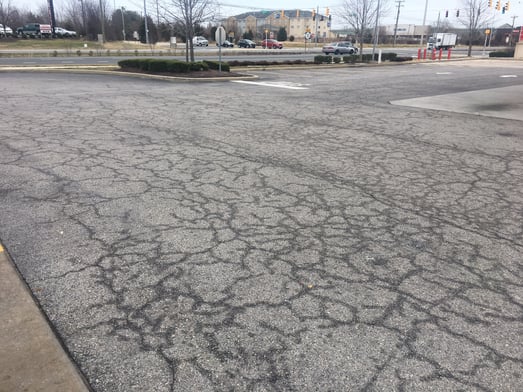
Here is an example of improper pavement thickness for the surface course of asphalt. It is apparent the cracking is due to the constant high traffic. (REMEDY: Mill the asphalt to a depth of 2"and power sweep the milled asphalt to check for cracks. If no crack exist, install a 2" asphalt overlay followed by a preventative maintenance plan (Seal coating Year 2 and then every 3 years there after).
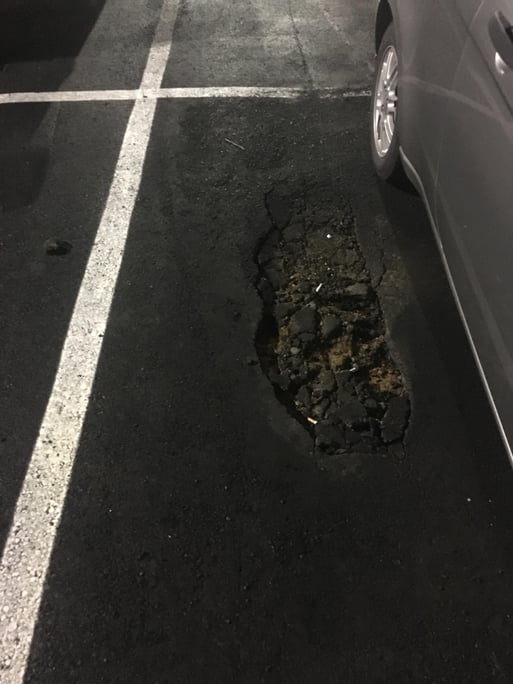
Here is an example of improper base thickness. The base was not a load bearing surface which has allowed the asphalt to create a pothole and expose the poor sub-grade. (REMEDY: Mill the asphalt to a depth of 10"and install 6" of stone, 2" of binder asphalt and 2" of surface asphalt followed by a preventative maintenance plan (Seal coating Year 2 and then every 3 years there after).
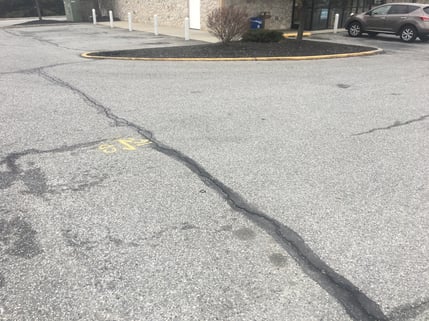
Deterioration from a lack of maintenance:
This small strip center performed some periodic crack sealing but did not perform follow up crack sealing or pavement seal coating which has allowed the asphalt to crack and deteriorate. (What should have been done: Parking lots that are more than 4 years old should be inspected once a year as part of a Pavement Management Plan (PMP). If cracks are present an inspection should be complete din the early spring and late fall with any cracks that are unsealed being sealed with a hot pour rubberized crack sealant to prevent water infiltration. This strip center owner would have benefited greatly from a Preventative Maintenance Plan that included asphalt seal coating on a 3 year rotation)
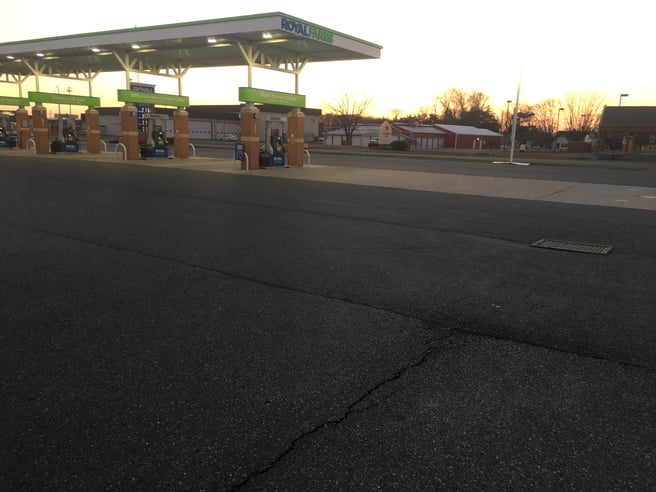
Paver seams opening in a 3-4 year old asphalt parking lot:
All parking lots will have paver seams as the asphalt begins to age. Joint construction- the technical term used to describe paver seams- will begin to separate if when the asphalt was installed the joints began to cool to quickly between passes. When the vertical walls of the joints cool too quickly between passes they will begin to seperate at years 2-5 after installation. Bottom line, during the most perfect paving jobs things go wrong during installation that are sometimes beyond the contractors control (ie: weather, un-forcasted high winds, traffic delays, asphalt plant break downs, excessive lines at the asphalt plant etc) which make it impossible to have hot seams on every pass. (REMEDY: Clean the joints thoroughly with compressed air and a hot air lance if moisture is present. Install a hot rubberized crack sealant with an application of black beauty slag black sand for traction, durability and less traffic control. Inspect these joints in the spring and fall and provide follow up sealing as needed as they are a direct express lane for water to enter the sub grade)
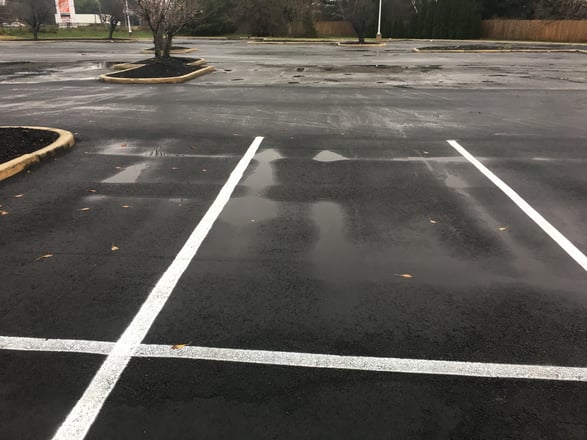
Non-load bearing sub-grade is easy to identify as there will be ruts throughout the parking lot which will be highlighted after a rain storm. This is caused typically by clay based soils underneath the asphalt which result in a "wave". (REMEDY: The asphalt parking lot needs to be cored down into the sub grade to determine the geology of the soils along with testing the California Bearing Ratio Test-CBR- of the underground soils to determine how deep the excavation will need to go to reach load bearing soils to install sub grade stone over. In some cases a plastic geotextile soil stabilization membrane may be needed to stabilize the native soils prior to installing the sub grade stone)
CONCLUSION:
Just like a dentist would not begin to treat a cavity until an x-ray is performed, taking a shot gun approach by just "assuming" a failure is caused by one factor or another is haphazard and will produce substandard results at best. When the cause of the failure is not immidiately evident asphalt coring is your best investment to uncover the cause of the issue. It is imperative to understand the root cause of the asphalt cracking so the proper corrective or structural remediation can maximize the investment of your CAMS's or CAPEX budget dollars ($$$).




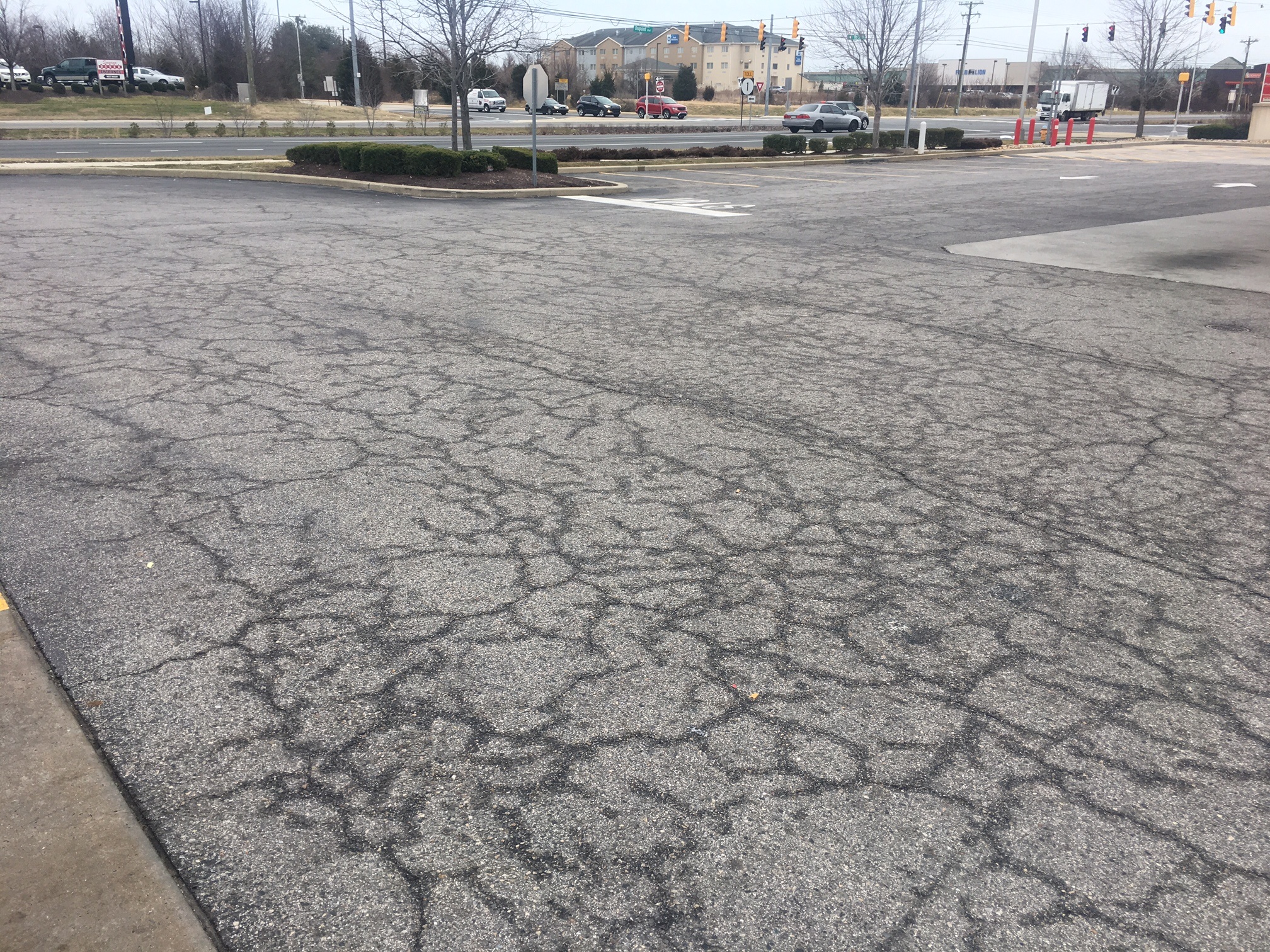






Leave a Comment